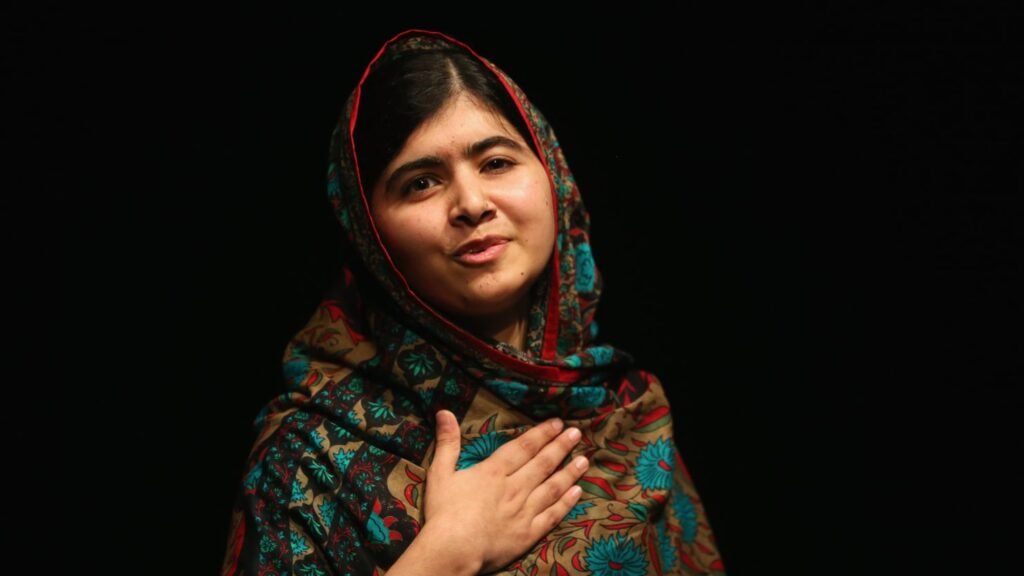The Girl Who Defied Terror for Education
Few voices in modern history have resonated as powerfully as Malala Yousafzai’s. From surviving a Taliban assassination attempt at just 15 years old to becoming the youngest Nobel Peace Prize laureate, her extraordinary journey has become a global symbol of courage and the fight for education. This is the story of how one girl’s unwavering determination transformed her into an international icon for children’s rights and female education.
Early Life in Pakistan’s Swat Valley
Malala Yousafzai was born on July 12, 1997 in Mingora, the largest city in Pakistan’s picturesque Swat Valley. Her father Ziauddin, a school owner and educational activist, named her after Malalai of Maiwand, a famous Afghan folk heroine who inspired soldiers during battle. This prophetic naming hinted at the extraordinary path young Malala would follow.
Growing up, Malala loved learning and excelled in her studies. Her childhood was relatively peaceful until 2007 when Taliban militants gained control of Swat Valley. The extremists quickly imposed harsh restrictions, banning television, music, and most devastatingly for Malala – girls’ education. By late 2008, the Taliban had destroyed nearly 400 schools in the region.

Secret Diary of a Schoolgirl Under Siege
Few know Malala initially refused to blog for BBC – her mother feared Taliban retaliation. It was her younger brother who accidentally revealed her identity by bragging to friends about “my famous sister.” During the Taliban occupation, Malala developed a secret code with classmates to warn about militant patrols. She would pretend to read a chemistry book while actually studying banned subjects, hiding materials under her bed when raids occurred.
Speaking Out Against Taliban Oppression
At just 11 years old, Malala began anonymously blogging for BBC Urdu about life under Taliban rule. Writing under the pseudonym “Gul Makai,” she described her fear attending school as classrooms emptied around her. “I have the right of education,” she wrote in one poignant entry. “I have the right to play. I have the right to sing.”
Her activism soon became more public. In 2009, she gave her first major speech in Peshawar titled “How Dare the Taliban Take Away My Basic Right to Education?” That same year, a New York Times documentary about her life brought international attention to her cause. As her profile grew, so did the dangers – anonymous threats began arriving at her home.
The Assassination Attempt That Shook the World
On October 9, 2012, 15-year-old Malala was riding her school bus when a masked Taliban gunman boarded and shot her in the head at point-blank range. The attack left her in critical condition and sparked global outrage. After emergency treatment in Pakistan, she was transferred to Queen Elizabeth Hospital in Birmingham, England for specialized care.
Miraculously, Malala survived the brutal attack. After months of surgeries and rehabilitation, she emerged more determined than ever to continue her activism. “They thought bullets would silence us,” she later said, “but nothing changed in my life except this: weakness, fear and hopelessness died. Strength, power and courage was born.”
Becoming a Global Symbol for Education
Malala’s recovery in England marked the beginning of her transformation into a global icon. On her 16th birthday in 2013, she gave an electrifying speech at the United Nations that was watched worldwide. “One child, one teacher, one book and one pen can change the world,” she declared while wearing the blood-stained shawl of assassinated Pakistani leader Benazir Bhutto.
That same year, she published her memoir “I Am Malala,” which became an international bestseller. In 2014, her extraordinary courage was recognized with the Nobel Peace Prize, making her the youngest recipient in history at just 17 years old. She shared the award with Indian children’s rights activist Kailash Satyarthi.

Nobel Peace Prize Triumph
At 17, Malala became the youngest Nobel laureate in 2014, honored alongside Kailash Satyarthi for championing children’s education rights. When the news broke during her chemistry class in Birmingham, she famously insisted on finishing her school day before addressing the world. Her entire $1.1 million prize funded Gaza school reconstruction through UNRWA, while her Nobel medal now rests beside her bullet-damaged school uniform in a Birmingham museum – a stark symbol of her journey from victim to global advocate.
The Malala Fund and Continued Activism
With her father, Malala established the Malala Fund in 2013 to champion every girl’s right to 12 years of free, safe, quality education. The organization has invested millions in education programs across developing countries from Pakistan to Nigeria to Brazil.
Malala went on to study Philosophy, Politics and Economics at Oxford University, graduating in 2020. Even while pursuing her own education, she continued advocating globally – meeting with world leaders, addressing the United Nations multiple times, and speaking out for refugees and marginalized communities.
The Unfinished Revolution
Today, Malala’s activism extends beyond education. She funds girls’ STEM programs in refugee camps and advocates for climate justice, noting how environmental disasters disproportionately keep girls out of school. In 2022, she married in a private Islamic ceremony but continues using “Yousafzai” professionally – a quiet feminist statement in patriarchal Pakistan. Her most radical belief? “The Taliban didn’t make me – they revealed what already existed in millions of girls.”
A Lasting Legacy
Today at 26, Malala remains one of the world’s most influential advocates for girls’ education. Her courage has inspired millions and brought unprecedented attention to the 130 million girls worldwide denied schooling. From the valleys of Pakistan to the halls of global power, her voice continues to echo a simple, powerful message: “Let us pick up our books and pens. They are our most powerful weapons.”
Go to main page


